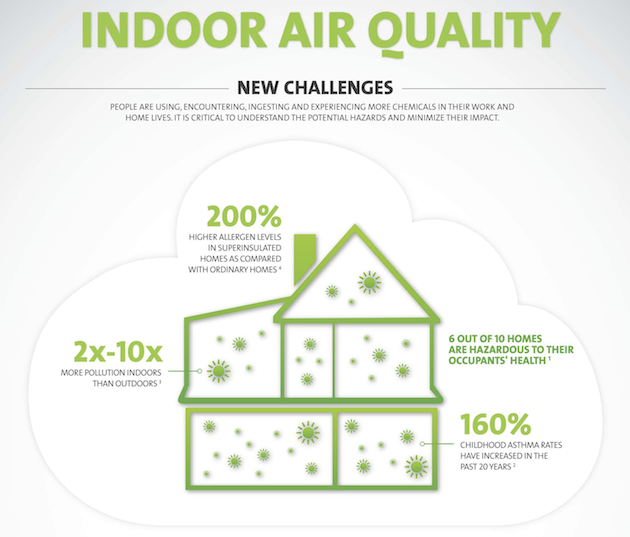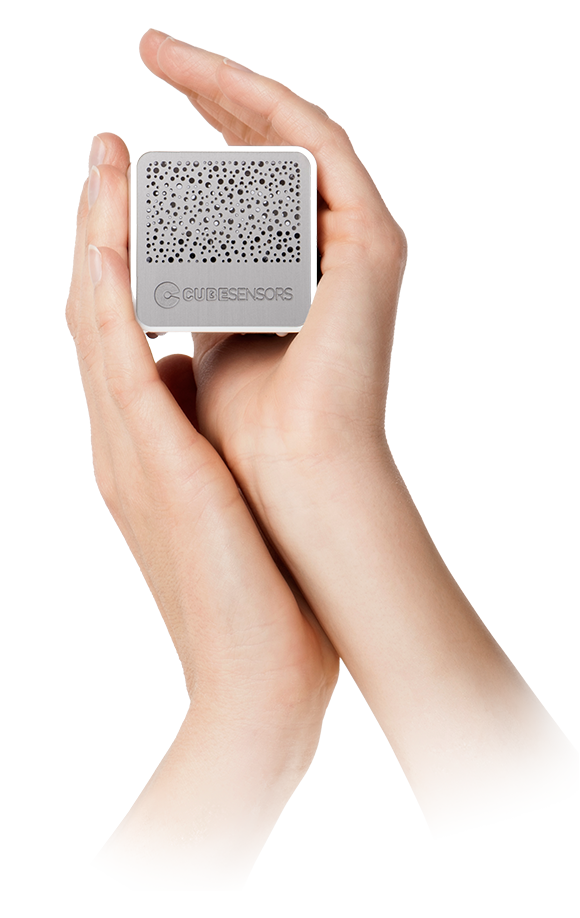5 things you should know about the air you breathe indoors
by Alja Isakovic
In the two minutes it takes to read through this post, you will inhale and exhale approximately 15 liters (about half of a cubic foot) of air. Chances are you are reading this in an indoor space. How does the air feel?
Unless there are any strong smells lingering around, your answer is probably “fine”. That’s a good start. But appearances can be deceiving. Usually, there’s much more to indoor air that meets the nose!
Did you know that …
1) We spend an average of 90% of our time indoors and 65% of time inside our homes. That means that living in a home with high indoor air pollution levels can be even more harmful than living in a highly polluted city. (source)
2) Indoor levels of air pollutants may be 2 to 5 times higher and sometimes even more than 100 times higher than outdoor pollutant levels. Children are even more susceptible to air pollution than adults. (source)
3) Volatile organic compounds (VOCs) are a common source of indoor air pollution. VOCs are gases emitted from paints, aerosol sprays, cleaning products, building materials, printers and more. Some of VOCs can cause serious health problems and can’t always be detected by smell. Concentrations of many VOCs are consistently up to ten times higher indoors than outdoors. (source)
4) Indoor air pollution isn’t always immediately apparent. Headaches, irritated eyes, nose and throat, dizziness and fatigue can appear immediately after exposure. More serious effects such as respiratory diseases, heart disease, and cancer take time to develop and may even be experienced years after exposure. (source)
5) The most effective way to improve indoor air quality is removing the sources of pollution, followed by improved ventilation. Changing air filters regularly and keeping indoor humidity levels between 30% and 55% can also make a difference. (source)

